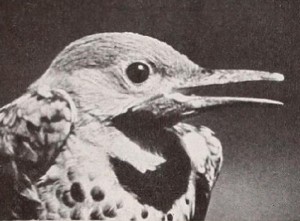
"Henry E. Hird offers the framework of a timely continuity plan for a scientific record in A Letter. A naturalist father writes a film letter to his sailor son who shares the father's scientific interest in bird and insect life, as well as in floral beauty. We see the father writing and the son reading a letter, the information in which is brought to life in film. Mr. Hird is a very capable observer and movie maker, and the combination of these abilities has enabled him to offer, in this informal style, a wealth of information. Extraordinary sequences of nesting birds are included." Movie Makers, Dec. 1943, 477.
"Tells the story of 'Little Hunter' hunting a bear using images carved into stone walls near the Colorado River by a Native American tribe." Church History Library.
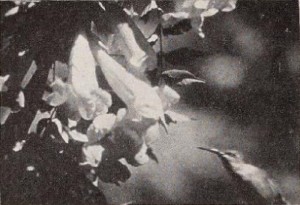
"Birnam Wood has moved again, this time across the ocean from Dunsinane to Cleveland, where Mrs. Warner Seely dons evergreen branches to film Madame Hummer at Home. Thus concealed, Mrs. Seely has made a fascinating record of the life cycle of the hummingbird. Although a dual approach to a film is not generally advisable, she has managed to combine ornithological data with a great deal of human interest. While we are learning much about the habits of the hummingbird, we sense a spirit of friendliness and informality about the film which gives it a wide appeal. A charming introduction leads us from a bird book, out into the garden and finally to the well concealed nest of Madame Hummer. Reaction shots of two young girls discovering the nest and scenes of Mrs. Seely at work in her "elephant hideout," as she calls her camouflaged vantage point, add much to the interest. Verse titles, occasionally too ingenious to scan, contribute to the overall feeling of warmth in this nature picture." Movie Makers, Dec. 1941, 566.
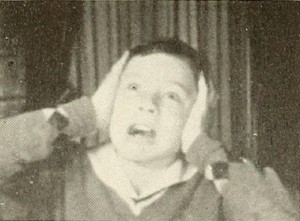
"The plot of Magic Mush is one that is fairly familiar to movie makers. A youngster saves up enough of the coupons that come with a breakfast food to get a free magic set, complete with wand. It turns out that the magic wand actually works, and Sister and Brother make things appear and disappear to their hearts' content. The trick work involved is done by stopping the camera, removing some article from the scene, or adding one to it, and starting the camera again. To this familiar plot, Eric N. Unmack has added some clever ideas of his own. One amusing device is the return of a kitten, rescued from the limbo of magic; she comes floating down, tied to a small parachute. Other clever tricks and especially good acting make this a first class family reel. All of it is presented with uniformly excellent interior filming." Movie Makers, Dec. 1941, 566.
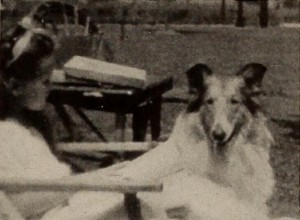
"In a relatively short period of filming, Raymond J. Berger has mastered a type of photoplay which a great many persons have expressed a desire to make, the story film featuring a child and a pet. His script, a simple and unpretentious recounting of how an invalid child wills herself to walk again, to go to the aid of her injured dog, proves an ideal vehicle for Mr. Berger's young daughter and her handsome collie, Lassie. This 8mm. Kodachrome picture, scored with re-recorded music, is noteworthy for its excellent framing and splendid closeups. Particularly engaging is the sequence, after the accident, showing the mutual recovery of the two stars. Young Miss Berger, considering the limited histrionic ability of a natural child, plays her role with grace and assurance; her crying scenes and the ingenuous frolics with Lassie are unusually credible and well performed. Mr. Berger deserves credit for his planning and fulfillment of a screen play that revolves around two such charming personalities." Movie Makers, Dec. 1946, 486.
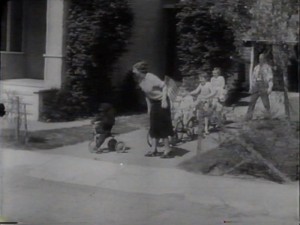
"This film records, in the informal style of a home movie, some of a young chimpanzee's (Pan troglodytes) activities while raised in the Ravens' home. She plays with a hose, joins in games with the Raven children, manipulates tools, encounters snakes and mice, writes with a pencil, eats with a spoon, rides a tricycle, and feeds a human infant." University of Wisconsin-Madison Libraries.
"A very brief view of Conway Castle is followed by scenes from the Middlewich Show - the different stalls are seen, as well as some of the prize winning flowers and vegetables. There are shots of the smaller livestock at the show, such as rabbits, chickens and budgerigars. There is a dog show, and the Dairy Queen of Cheshire arrives with her entourage. She presents trophies to the winners of the large livestock competitions, and the film ends with a show-jumping competition." (NWFA Online Archive)
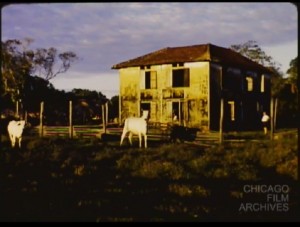
"2 part edited travelogue film of the people and customs encountered in towns along the Amazon River in South America. Part one includes landscapes, a variety of housing from towns to shacks along the river, people selling goods, trapping and selling exotic animals, herding cattle, boating, and a religious ceremony." Chicago Film Archives.
"Under the classification of Home Movie, Van Dee Sickler of Los Angeles was awarded the $50.00 prize for his picture 'Mishcief,' a 16 mm subject in 200 feet. The continuity is evolved around his wife, a Scotch terrier, a cat and a bird. The continuity, titles and photography of this picture were very good." American Cinematographer, Dec. 1934, 376.
"The Monarch Butterfly, winner of the MPD Nature Film Trophy, depicts the life cycle of this well known butterfly and shows the various stages through which it must pass" PSA Journal, Sept. 1966, 35.
Total Pages: 19